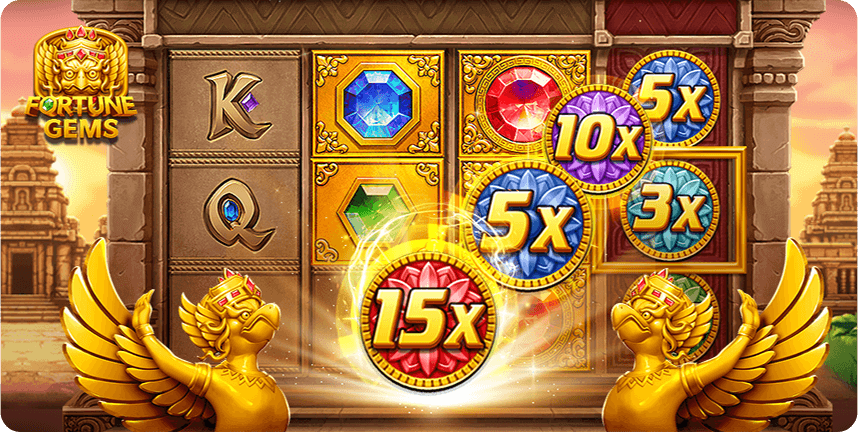Introduction: The Timeless Thrill of 66 Rummy
In a world overflowing with modern entertainment options and ever-evolving gaming apps, there is a certain charm in playing a card game that is both time-tested and intellectually stimulating. 66 rummy, also called “sixty-six,” is one such gem. This two-player card game is not only about luck or having high-value cards—it’s a mental battlefield, where players must anticipate, calculate, and outplay each other with sharp memory, strategy, and timely decisions.66 rummy, also known simply as “sixty-six,” is one such enduring favorite. This two-player card game, known for its swift rounds and strategic depth, has fascinated players across generations. With a perfect mix of memory, math, and mind games, it offers something more than just casual fun!
The goal of this in-depth guide is to walk you through every layer of this elegant game—from its fascinating origins and rule structures to the master-level techniques used by competitive players. Whether you’re just beginning or already a passionate fan of 66 rummy, this guide will provide you with insights, tactics, and techniques that will help sharpen your game.

Origins and Evolution of 66 Rummy
66 rummy’s history goes back to the 1700s in germany, where the game was originally known as mariagen-spiel, meaning “marriage game.” The term came from the unique mechanic of scoring points by combining a king and queen of the same suit. This pairing, called a “marriage,” remains central to the gameplay even today. Long before mobile apps and online platforms, 66 rummy was being played around wooden tables in european inns.
As the game spread across europe, several versions emerged. Schnapsen, a variant popular in austria and hungary, uses a 20-card deck and is often regarded as the more complex cousin of 66 rummy. Meanwhile, the traditional 66 version typically involves a 24-card deck, maintaining a simpler yet deeply strategic design. Over the years, 66 rummy has transitioned from tavern tables to online platforms, mobile apps, and tournament circuits. Despite these advancements, the essence of the game remains the same—smart timing, memory-based strategy, and managing a limited set of cards with surgical precision.
Today, 66 rummy continues to be a widely loved card game, whether it’s played in living rooms, online platforms, or competitive circle.
Game Setup & Rules
Deck Configuration
the game uses a total of 24 cards, consisting of the following ranks in each suit (hearts, diamonds, clubs, spades):
ace, 10, king, queen, jack, and 9.
Card values are as follows:
ace – 11 points
10 – 10 points
king – 4 points
queen – 3 points
jack – 2 points
9 – 0 points
Dealing & Trump Suit Selection
There are six cards handed out to every player at the start of the game.
After dealing, one card from the undealt pile is placed face-up, and its suit is selected as the trump suit for that round.
The rest of the cards are placed face-down to form the stock pile (draw pile).
Gameplay Phases
Phase one: Open stock
- Players are not required to follow suit during this phase.
- There is no obligation to win tricks.
- After each trick is completed, both players draw one card from the stock to maintain six cards in hand.
Phase 2: Closed Play
- This phase starts when the stock runs out or when a player chooses to close the game by flipping the trump card face-down.
- Players must follow suit if they can.
- If capable, players are required to win the trick
Marriages and points
If a player holds both the King and Queen of the same suit, it’s considered a “marriage.”
Declaring a marriage gives:
- 20 points for a regular suit.
- 40 points if the marriage is in the trump suit.
- A marriage must be declared only when leading a trick, and the player must announce it before playing one of the cards.
Closing the Game (Ending the Stock Phase)
- At any point, if a player feels confident they can reach 66 points using just their hand, they may close the stock by turning the trump card face-down.
- Once closed, no more cards are drawn from the deck, and phase 2 rules immediately apply.

Winning the Round
The round ends when one player reaches 66 points through a mix of:
Trick wins
Declared marriages
Securing the last trick of the game grants the player an extra 10 points.
Scoring the Game Points:
- If the opponent scores 33 points or more → Winner gets 1 game point.
- If the opponent scores between 0–32 points → Winner earns 2 game points.
- If the opponent fails to win any tricks → Winner receives 3 game points.
Common mistakes beginners should avoid
Even brilliant players get into traps in their first games, here are some common beginner errors:
- Not keeping track of points: most amateurs overlook tracking their points.as a result, players may end the game too soon or fail to capitalize on key opportunities.
- Declaring marriages without advantage: announcing a marriage without being in control of the lead is wasted effort.
- Closing too early: without a strong hand, closing the stock is a risky move. Evaluate thoroughly before taking this leap.
- Underestimating the final trick: those final 10 points could make all the difference between a win or a loss.
Pro Tip: Count Points after every trick in your head. It improves your ability to make smart choices and avoid major slip-ups.
Intermediate Strategies for the Advancing Player
Once you’re comfortable with the basics, it’s time to upgrade your gameplay with more refined tactics.
Closing timing: learn to recognize when it’s safe and strategic to close the stock. It’s an aggressive move that works best when you already have a high-scoring hand or your opponent has little flexibility. It can reveal their weaknesses.
Marriage tactics: hold off declaring a marriage until you are sure you can win that trick. Also, try to time it when the additional 20 or 40 points will push you close to 66 or solidify your lead. Don’t wait too long — but don’t rush either. Closing is a weapon when timed perfectly.
Trump management: don’t use your trump cards early unless they guarantee you high-point tricks. Save them for strategic moments, especially if you suspect your opponent is holding a strong suit. Keep track of how many trumps are in play. Declare at the right time for max value.
Predicting trick order: track what cards have been played to forecast the opponent’s hand. This helps you decide when to sacrifice a trick and when to compete hard. Predict the flow of tricks by visualizing the possible cards your opponent might be holding, if you’re winning, force them to waste good cards
Scenario example: you’re holding a king-queen of trump and a ten. Advertise the marriage, play the trick with your ten, and precisely hit 66. This kind of sequencing creates satisfying wins.

Advanced Play: Tactics Used by Pros
Mastering 66 Rummy means thinking multiple moves ahead. Here’s what experienced players do:
- Hand analysis: before every trick, evaluate if your hand can reach 66. Consider how each move adds or subtracts from that goal. Not every ace needs to be used for offense. Sometimes it’s smarter to bait your opponent with a weaker card and keep the high ones for closing.
- Bluffing with closure: close the stock with a borderline hand to create psychological pressure. Most opponents fail under the impression you hold a better hand. If you close early with only half a good hand, it might throw your opponent off. They may panic and make mistakes.
- Predictive thinking: by tracking played cards and observing patterns, you can deduce your opponent’s hand structure. Keep mental notes on what suits they’ve discarded. That’s the key to controlling the endgame.
- Trade-off management: sometimes giving away a 10-point trick is worth the long-term gain. Pros know how to exchange short-term losses for strategic advantage. Weigh the risks and rewards—sometimes giving up a trick now can lead to a bigger advantage later. Giving away 10 points now might help you score 30 later.
Visual Tools & Score Tables
Use quick decision guides to make better plays under pressure:
Flowchart:
- Have over 50 points? → Yes → Do you have a marriage to declare? → Yes → Consider closing.
- Opponent avoiding a suit? → Target that suit to bait trumps.
Scoring Summary:
Trick/Card Points
Ace 11
Ten 10
King 4
Queen 3
Jack 2
Nine 0
Marriage (non-trump) 20
Marriage (trump suit) 40
Final Trick 10
Frequently Asked Questions (FAQs)
Q: Can I declare a marriage after closing the stock? A: No. Marriages must be declared while the stock is still open and only when leading.
Q: What if both players hit 66 points in the same trick? A: the winner is the player who declares or proves it first, usually by winning the trick that completes 66.
Q: Is it legal to close the stock with a low point total? A: yes, but it’s risky. If you fail to reach 66 after closing, you lose instantly.
Q: Can I fake weakness with a poor opening hand? A: Yes! Bluffing and baiting are valid tactics in high-level 66 play.
Training and Practice Techniques
Online Tools:
- Use simulators and mobile apps that mimic real match conditions.
- Try using time limits to simulate the intensity of tournament play.
Solo Drills:
- Set up specific hand combinations.
- Practice winning without marriages or trump.
- Play from behind to improve recovery tactics.
Analytical Practice:
- Watch gameplay videos of pros.
- Log your games in a journal—note errors, near-misses, and breakthrough plays.
Challenge Drill: try playing 3 hands where you can only win with final trick bonuses. It enhances your vigilance and long-term planning.
Conclusion: From Learner to Legend
In 66 rummy, every card matters. Every trick is a clue. Every decision reveals your mindset. The difference between amateurs and champions lies not just in card luck but in reading the game—and your opponent—like an open book. 66 rummy is a game of elegant simplicity and deep complexity. From understanding, its historical roots to mastering marriages, closing tactics, and reading your opponent, every session is a new puzzle. If you’re serious about improving, play regularly analyze your moves, learn from your defeats, and adjust your strategy.
With the tools, tactics, and mindset provided in this guide, you’re now equipped to enter every match with confidence. Keep practicing. Keep analyzing. Whether you’re playing for fun or fame, your journey toward mastering 66 rummy has already begun.
Now pick up the deck—and let the mind games begin.









